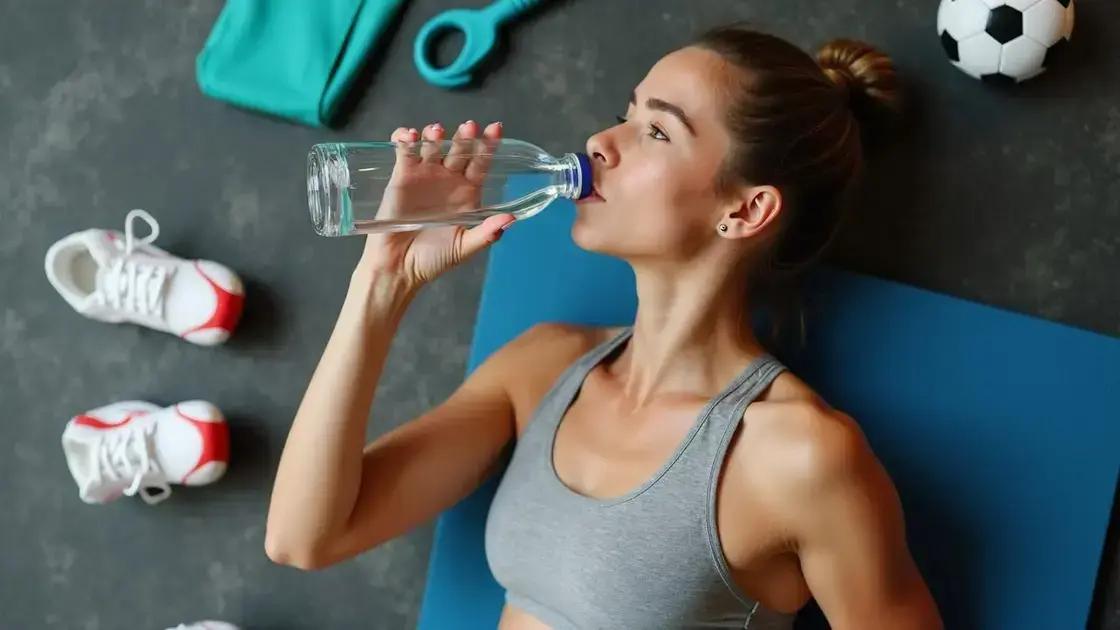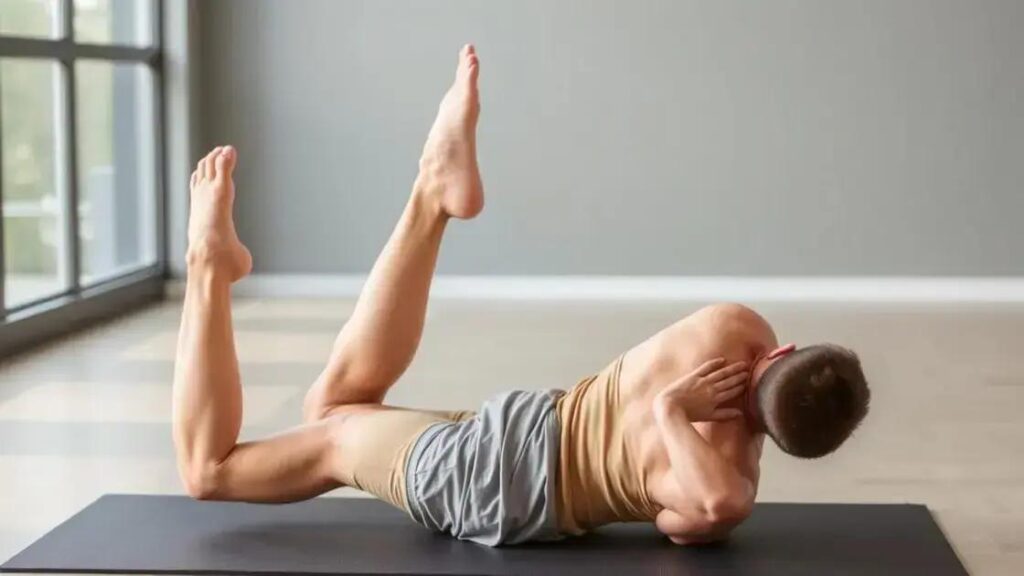To prevent muscle tightness after long workouts, implement effective strategies such as proper stretching techniques, staying hydrated, refueling with nutrition, and allowing adequate recovery time through rest and light activity. Incorporating these methods can enhance muscle flexibility and overall performance.
Experiencing muscle tightness after workouts is common, but it doesn’t have to be a part of your routine. How to prevent muscle tightness after long workouts? By implementing effective strategies, you can enhance your recovery and keep your muscles flexible. In this article, we’ll delve into the causes of muscle tightness, share essential stretching techniques, highlight hydration’s role, and discuss recovery strategies that will help you maintain optimal muscle health.
Understanding Muscle Tightness

Muscle tightness is a familiar feeling after intense workouts, making it harder to perform daily activities. Understanding muscle tightness can help you manage and even prevent this discomfort. When you exercise, your muscles undergo stress, which can lead to microscopic tears. This is a normal process that helps muscles grow stronger, but it can also result in tightness as your body repairs itself.
Causes of Muscle Tightness
Several factors can contribute to muscle tightness. One primary reason is overexertion. Lifting heavy weights or pushing your muscles beyond their limits can cause them to stiffen. Additionally, dehydration during or after your workout can exacerbate tightness, as muscles need water to function properly.
The Role of Inactivity
Inactivity for long periods can also lead to muscle tightness, as movement helps keep muscles flexible. If you sit for long hours, especially after an intense workout, your muscles may seize up, increasing discomfort.
Symptoms of Muscle Tightness
Common signs of muscle tightness include a persistent ache, reduced range of motion, and stiffness. Some individuals may experience a sensation similar to a cramp. Recognizing these symptoms early can help prevent more serious issues.
In summary, understanding the causes and symptoms of muscle tightness is crucial for developing effective prevention strategies. By staying aware of your body and applying the right techniques, you can maintain flexibility and reduce the discomfort that comes after long workouts.
Effective Stretching Techniques

Incorporating effective stretching techniques into your routine can significantly reduce muscle tightness after workouts. Stretching improves flexibility, enhances blood flow, and aids in recovery. Here are some key techniques to consider:
1. Static Stretching
This involves holding a stretch for a specific duration, usually 15-60 seconds. Focus on major muscle groups like the hamstrings, quadriceps, and shoulders. For example, to stretch your hamstrings, sit on the ground with one leg extended and reach towards your toes.
2. Dynamic Stretching
Dynamic stretching is perfect for warming up before a workout. It involves controlled movements that gently take you to the limits of your range of motion. Arm circles, leg swings, and torso twists are great examples that promote flexibility while also preparing your body for exercise.
3. Foam Rolling
Foam rolling helps release knots in muscles and improves mobility. Take a foam roller and apply pressure to tight areas like your back, calves, and thighs. Roll slowly to allow the muscle to relax, which can help mitigate tightness.
4. Targeted Stretches
After a workout, focus on areas that feel particularly tight. For instance, if your shoulders are tense, perform shoulder rolls and cross-body arm stretches. Concentrating on these areas will aid in recovery and reduce tightness.
By practicing these stretching techniques regularly, you can significantly reduce the risk of muscle tightness and increase your overall flexibility, making your workouts more effective and enjoyable.
Importance of Hydration

Importance of hydration cannot be overstated, especially after long workouts. Staying properly hydrated helps your body function optimally and prevents muscle tightness. Water plays several key roles in muscle recovery and overall performance.
1. Regulating Body Temperature
During intense physical activity, your body temperature rises. Sweating helps cool you down, but this process leads to losing fluids. If you do not replace those fluids, you may experience tightness and cramping.
2. Aiding Nutrient Transport
Water is essential for transporting nutrients to your muscles. It helps deliver oxygen and nutrients required for recovery, reducing soreness and tightness post-exercise. Without adequate hydration, your muscles may not receive the help they need.
3. Preventing Cramps
Dehydration can result in muscle cramps, increasing tightness and discomfort. Keeping your body hydrated helps manage electrolyte balance, lowering the risk of cramps that can occur after you push your limits.
4. Enhancing Recovery
Hydration supports faster recovery of muscles after a workout. Drinking water replenishes lost fluids and helps prevent muscle stiffness. Aim for at least 8-10 cups of water daily, and increase this amount during and after intense exercise.
In summary, staying hydrated is crucial for muscle recovery and preventing tightness. Make sure to drink water before, during, and after your workouts to keep your muscles healthy and flexible.
Post-Workout Recovery Strategies

Implementing post-workout recovery strategies is essential for preventing muscle tightness and ensuring a smooth recovery. Here are several effective methods to consider:
1. Cool Down Properly
After an intense workout, take time to cool down. Gradually decrease your activity level and engage in light stretching. This helps to lower your heart rate and reduce muscle stiffness.
2. Refuel with Nutrition
Eating a balanced meal post-workout is vital. Include proteins and carbohydrates in your meal to help repair muscles and replenish energy stores. Foods like chicken, eggs, and whole grains are excellent choices.
3. Get Enough Rest
Sleep is crucial for muscle recovery. Aim for at least 7-9 hours of quality sleep each night. This allows your body to repair itself, making it less likely for muscles to feel tight.
4. Use Recovery Tools
Consider using recovery tools like massage guns or foam rollers. These help soothe sore muscles and improve blood circulation, which is beneficial for reducing tightness.
5. Stay Active
Engaging in light activity on your recovery days can keep your muscles flexible. Gentle walks or yoga can increase blood flow and speed up recovery without adding stress to your muscles.
By incorporating these recovery strategies into your routine, you can significantly reduce muscle tightness and enhance your overall performance.
In Summary, Preventing Muscle Tightness After Workouts
Understanding how to prevent muscle tightness after long workouts effectively involves several key strategies. By grasping the causes of muscle tightness and implementing effective stretching techniques, you can enhance flexibility and reduce discomfort.
Moreover, the importance of hydration cannot be overlooked as it plays a crucial role in your recovery process. Following post-workout recovery strategies like cooling down, refueling with proper nutrition, and ensuring adequate rest will further minimize muscle tightness.
By taking these steps, you can enjoy a more pleasant workout experience, allowing you to perform at your best while keeping tightness at bay.
FAQ – Frequently Asked Questions About Preventing Muscle Tightness After Workouts
What are some common causes of muscle tightness after workouts?
Muscle tightness can be caused by overexertion, dehydration, inactivity, and the natural muscle repair process following intense exercise.
How can stretching help prevent muscle tightness?
Stretching improves flexibility and blood flow, which can aid muscle recovery and reduce the risk of tightness after workouts.
Why is hydration important for muscle recovery?
Proper hydration helps regulate body temperature, transport nutrients, prevent cramps, and enhances overall recovery of muscles after exercise.
What are effective post-workout recovery strategies?
Effective strategies include cooling down properly, refueling with balanced nutrition, getting enough rest, using recovery tools, and staying active with light exercises.
How much water should I drink after working out?
It’s recommended to drink at least 8-10 cups of water daily, and increase this amount based on the intensity of your workouts.
What stretching techniques should I use after exercising?
Use static stretching to hold stretches for 15-60 seconds and consider dynamic stretching before workouts to prepare your muscles.












